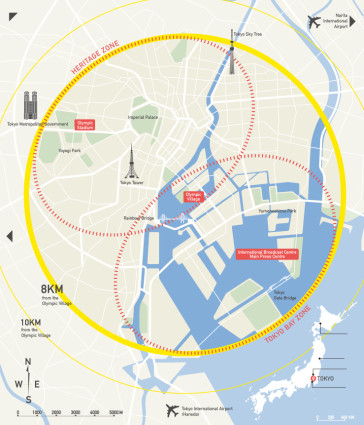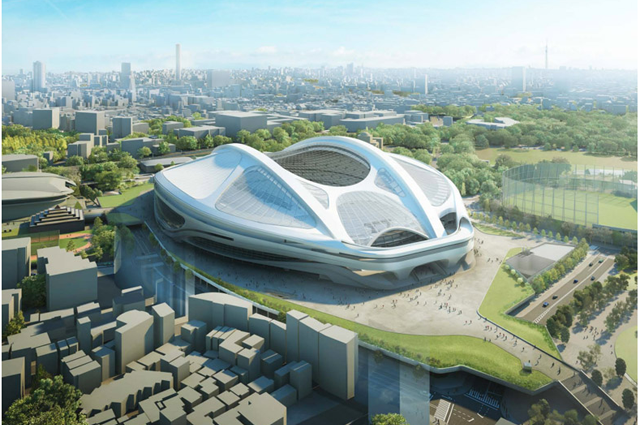50 years after it was lit, the cauldron from the National Stadium, where the opening and closing of the 1964 Olympic Games were held, was removed last month. This was one more step toward the stadium’s eventual demolition, which is slated for the end of the year. In its place will be a futuristic new stadium—but before ground is being broken, there is already plenty of controversy.
The 1964 Olympics signaled Japan’s recovery from the devastation of World War II, and organizers of the 2020 Games are counting on another positive leap from their nearly two-decade-long economic funk. Whether or not the new design of the stadium can reflect this is another question.
The plans for the stadium were designed by award-winning British-Iraqi architect Zaha Hadid, a well known figure in the world of architecture. However, her designs quickly received complaints regarding their size, look, and costs. With a roof, a museum and restaurants inside, the 80,000-seat piece and its soaring 20 stories were said to be an eyesore in one of the city’s few green areas.
Going back to the drawing board, Hadid’s firm created new designs in July that were meant to cut costs and take up less space. Reaction has been far from positive.
One of the most colorful responses has come from Arata Isozaki, the 83-year-old architect of the Palau Sant Jordi used in the 1992 Barcelona Olympics: “Two years ago, I felt that the Zaha Hadid proposal … was a design that presented an excellent image of a 21st century urban architecture. However, when I saw the revised proposal I was shocked to see that the dynamism presented in the original had gone … What remains is a dull, slow form, like a turtle waiting for Japan to sink so that it can swim away.”

Map image: Tokyo 2020
Questions of aesthetics are not the only problems that new Olympic construction efforts will face. About $4.5 billion has already been set aside for Olympic venues and related projects, but that may not be enough. Since a review of the costs, the price for the showpiece venue alone is said to have been lowered from $3 billion to $1.6 billion—but critics remain skeptical as to whether these numbers will stay this low as building gets under way.
Tokyo Governor Yoichi Masuzoe, who took office after Tokyo won the Olympic bid last year, ordered a review of the entire construction plan after warning that costs for some projects could climb as much as 50 times above original estimates. That increase is due in part to the large-scale recovery projects in areas devastated by the 2011 earthquake and tsunami, creating a shortage of labor and materials for other building programs, including the Olympics.
—Mona Neuhauss
Main image: Dezeen









